Go your own way: James Ferrara’s signature style
James Ferrara's signature style developed naturally. He offers advice on how other photographers can a signature look.
• February 2020 issue
It could be James Ferrara’s background in film that gives his work a free-flowing, cinematic feel. Fifteen years of working on movie, television, and commercial sets developed in him an intuitive sense of movement and staging. Or it could be his longtime passion for the still image, launched in high school and carried on for years as a hobby.
Whatever it is, it works. And it sells.
Looking for a creative outlet that he could control, Ferrara, M.Photog.Cr., began shooting the occasional wedding and portrait in 2003. The casual side hustle turned into a more consistent trickle of work in 2004, then a steady stream in 2005, and a full torrent by 2006. By 2007 he was busy enough to leave his day job in the film industry and pursue photography full time, much to the delight of a growing and loyal client base around his Cornwall, New York, studio.
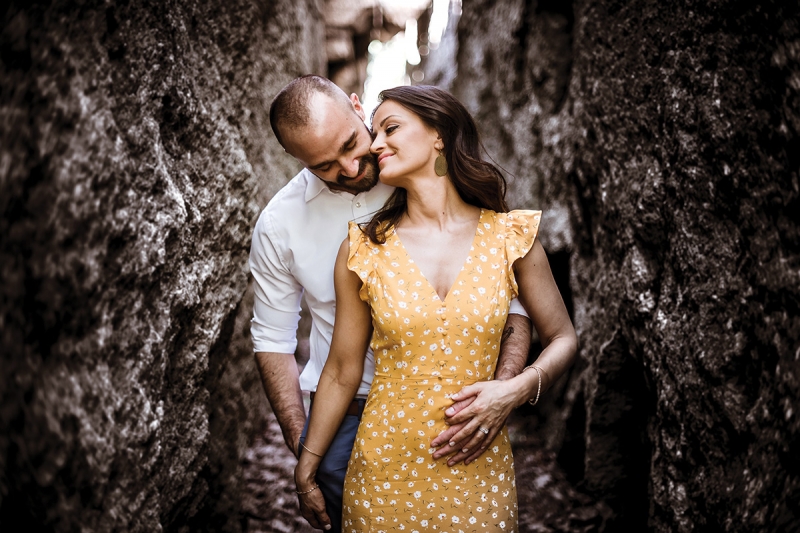
A STYLE DEVELOPS
In the beginning, photography was just for fun, a route to artistic expression, so Ferrara decided that he was going to do photography the way he wanted to do it. “I just did what I wanted, not what magazines or other photographers said I should do,” he remembers. “People started to notice my work and tell me it was different, more free-flowing than the typical style at the time.”
Ferrara’s look attracted wedding couples who were seeking an augmented take on photojournalism, something candid and emotional yet directed and enhanced. His work fit the bill but not because he was trying for a particularly marketable style. Rather, Ferrara’s style emerged from the evolution of his personal preferences, which just happened to dovetail with contemporary tastes. The result was a trademark style that has defined his work for more than a decade.
“I’m grateful it happened this way because it’s very hard to escape from a style once it’s established,” he says. “As a photographer, a style might slowly emerge, and you might not be aware of it at the time. That was me. My style developed over time, and I wasn’t even conscious of it. Then around 2010, everything started to look very consistent. That consistency has remained and helps identify my work today. My shots from 10 years ago could’ve been taken last week.”
To other photographers working through the evolution of their styles, Ferrara encourages exploration but urges them to display only the images they want to be defined by in the market. “Don’t put everything up on your website right away,” he says. “Let your work evolve and develop, and look for the common themes, the consistency. You’ll start to see your style developing. Then display what is consistent and what you love.”
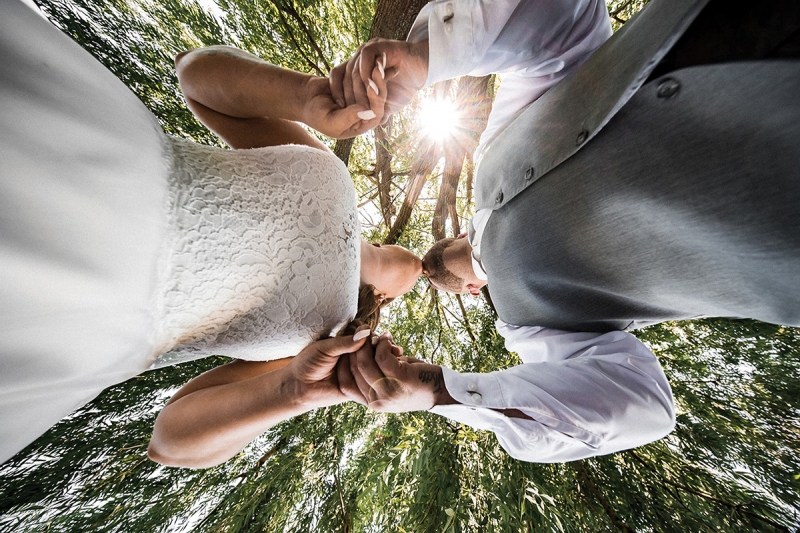
A PEOPLE PERSON
Ferrara is constantly talking to his clients. He talks to put them at ease. He talks to direct them. He talks to reassure them that he knows what he’s doing. It’s part of the experience. “Always talk as you’re working,” he suggests. “As soon as you’re quiet, people start to wonder. They want a sense of guidance, comfort, and assurance that you’ve got everything handled. Remember, very few people are naturally comfortable in front of camera. The last thing you want on a wedding day is for the couple to feel awkward or uncomfortable.”
Unless making them feel awkward is part of the plan. Sometimes, setting people at ease means making them laugh or doing something to get them to drop their guard for a moment. Ferrara likes to use misdirection to distract clients and get them to react naturally rather than being caught up in their self-consciousness. He might ask them to do something designed to make them feel awkward, just enough to get a laugh. And then he can move forward more freely.
Mostly, though, it’s just important to be yourself, he says. “You don’t have to have a bag of tricks when it comes to interacting with your clients,” he says. “Just be personable and remember that part of your job at a wedding is to be a guide. You’re the expert, and there are a lot of people looking to you for advice throughout the wedding day. It helps to be able to talk with them and set them at ease.”
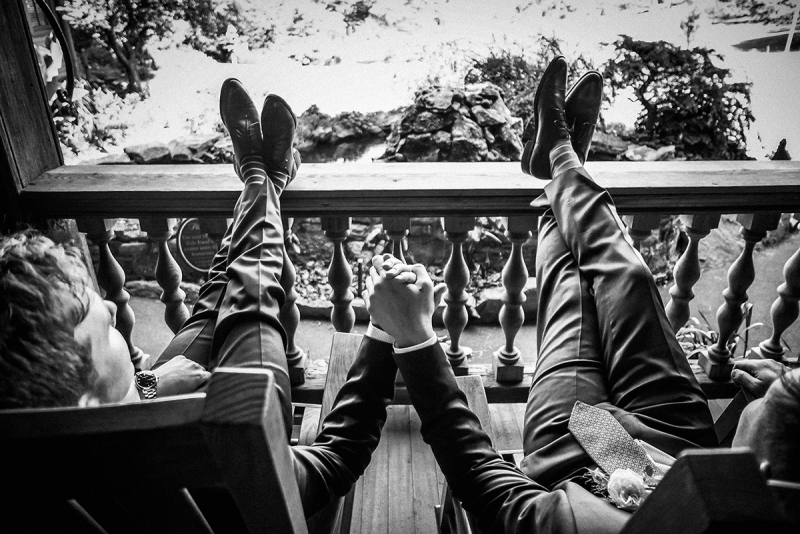
LIGHTING THE DAY
“The day is what it is,” says Ferrara. “But that doesn’t mean you have to let the light dictate the look.”
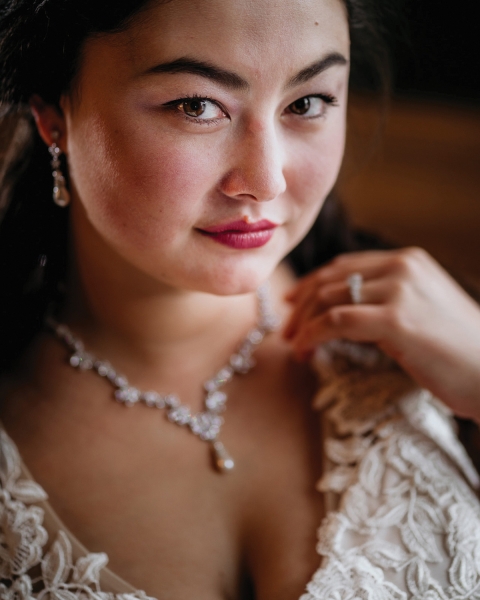
Even when making wedding portraits outside, Ferrara almost always uses strobes to augment the light and help create a specific look. If he’s working with an assistant, he’ll often employ a flash with an umbrella as a fill light to add some accent to group photographs.
Whenever possible, he uses bright LED lights as a continuous light source. That way he can see what he’s doing as he works without having to constantly peek at his camera back to check the lighting setup. For indoor shots, he’ll often place an LED light on a ledge or table as supplemental light. He likes to create an area of good light and then ask clients to move into it. This works particularly well during the pre-wedding portion of the day as the wedding party is getting ready.
At the reception, Ferrara typically works with a three-light setup—either three lights posi-tioned on stands in a triangular configuration or one flash on camera and two off-camera lights set up on tall stands.
The three off-camera lights setup works only in certain rooms and takes a lot of coordination. Ferrara sets up a triangle, usually placing one light in a corner, one by the band or DJ, and another on an opposite side of the room. Or he might put lights on either side of the band and DJ to light the crowd, with a third light at the back of the room. While shooting, he keeps the light behind him minimal, getting most of it ambiently and from side lights.
The setup with one light on camera and two off camera provides a little more flexibility. Ferrara likes to use this configuration when he’s moving around a lot to photograph individuals dancing and when he’s focusing on particular faces in a crowd. The on-camera flash ensures that he gets good light on faces as he moves. Ferrara still tries to work with lighting triangles; his on-camera flash forms the third point of the triangle with two stationary lights on the opposite sides of the room.
For extra effect, he’ll bounce light off a light-colored ceiling. In some cases he’ll place lights on the floor and aim them almost straight up, creating a wash of light that falls down on wedding guests.
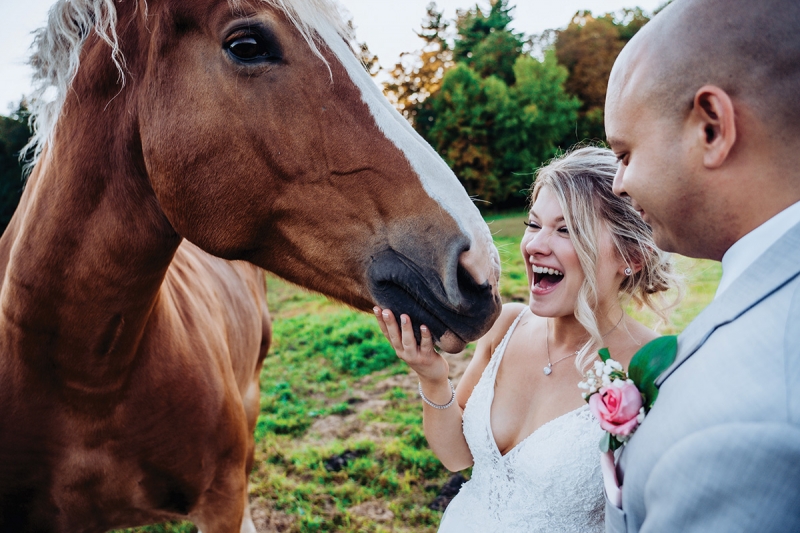
HELP CLIENTS SEE
“These days, so many people are taking pictures at a wedding, and they’re terrible, but they don’t care,” says Ferrara. “As professional photographers, we have to make sure the importance of good photography lasts. We have to educate our clients even before they book us. We have to talk about how we approach the day, our experience, and the difference between good and bad photography. We have to help them see and understand.”
That’s another reason, says Ferrara, that it’s so important to do things your way. Quality emerges out of a passion for what you do, and it’s difficult to fake it.
“That’s my best advice to other people: Do it your way. If you don’t, you won’t be happy, and it will show. You have to approach the day the way you want to. If a client is asking you to do something you don’t want to do, you have to speak up. If you keep changing and compromising for someone else, you won’t end up with photography that reflects your best work.”
So set your boundaries and define them clearly, says Ferrara. Your clients will thank you for it.
RELATED: PPA offers wedding photography degree
RELATED: See more of Ferrara's photos
Jeff Kent is editor-at-large of Professional Photographer.

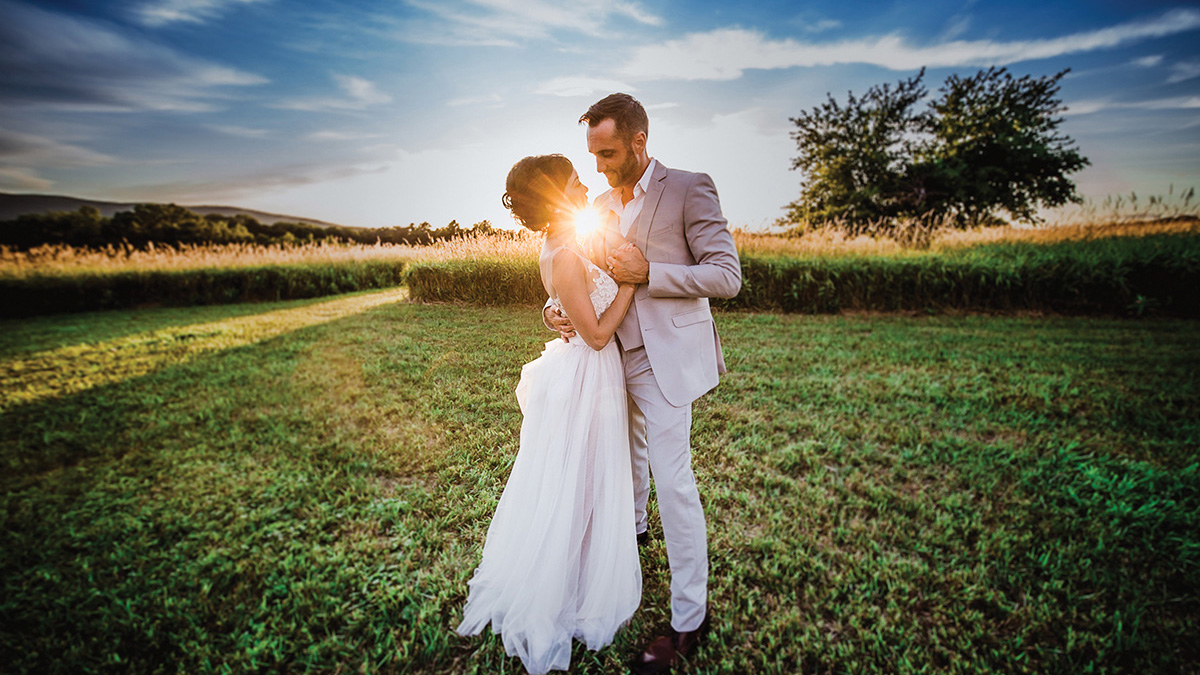
 View Gallery
View Gallery
